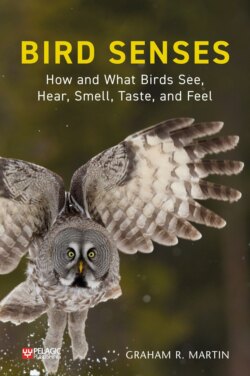Читать книгу Bird Senses - Graham R. Martin - Страница 14
На сайте Литреса книга снята с продажи.
Multiple information
ОглавлениеSensory ecology suggests that information from one sense can often be considered to predominate in the control of the behaviour of a particular species. We might even be tempted to assume that birds are ‘all about vision’. However, information from other senses frequently comes into play, sometimes in unexpected ways. Information from different senses may often be traded off and used in complementary ways for the successful completion of a particular action.
This is particularly seen to be the case when birds are active at low light levels, but it also applies to situations when birds execute tasks at high light levels. For example, a high-speed video will reveal the great precision with which a hovering hummingbird inserts its bill into a flower’s tube in search of nectar. Are the final manoeuvres guided by vision, by touch cues from the bill, or by taste, or is information from all three working in concert? Does the bird stop moving forward as soon as it tastes the nectar, or is it when the bill tip touches the nectary, or are visual cues from the flower entrance used?
As we consider the role of sensory information across the full diversity of birds, it becomes clear that many commonly observed behaviours involve not only sight but also hearing, taste, touch, smell, and even the detection of the earth’s magnetic field, used in various combinations. Multiple or complementary sensory information may guide many everyday behaviours of birds, ranging from foraging for specific items to finding the way around a territory or home range, or finding the way across or between continents.
